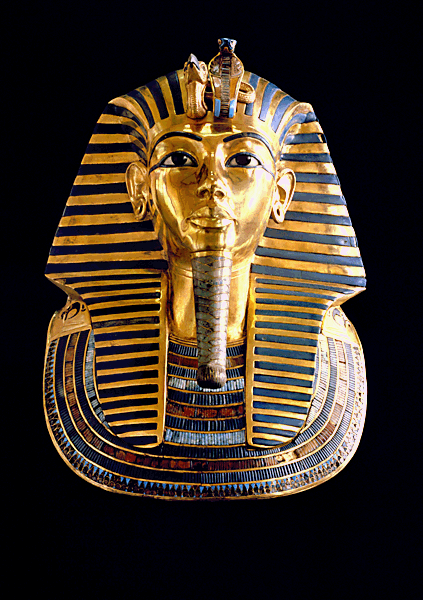Anniversary of the Curse of the Mummy
Tuesday, April 9th, 2013April 9, 2013
If you believe in curses, one began 90 years ago, on April 5, 1923, when Britain’s 5th Lord Carnarvon died in Cairo, Egypt. Carnarvon (1866-1923) was an amateur Egyptologist who sponsored an expedition led by archeologist Howard Carter. Carnarvon and Carter began their search in Egypt’s Valley of the Kings in 1917.
In November 1922, they entered what they believed to be a tomb. Carnarvon asked Carter, who had entered first holding a candle, “Can you see anything?” Carter’s reply, “Yes, wonderful things” has become legendary. The men had found the tomb of a little-known boy-king, Tutankhamun (meaning living image of Amun). Tutankhamun, or King Tut, as he is affectionately known, came to the throne of Egypt in 1332 B.C., when he was about 9. He died in 1322 B.C. Because of religious disputes, later rulers destroyed or removed all monuments built by or in honor of Tutankhamun. Because of that, his was the only tomb of an ancient Egyptian king to be discovered almost completely undamaged. Tutankhamun’s four-room tomb contained more than 5,000 objects, including many beautiful carved and gold-covered items. A magnificent gold mask of Tutankhamun covered the head and shoulders of the royal mummy.

Gold funerary mask of Tutankhamun (© SuperStock)
When Carnarvon died in Egypt only five months after the opening of Tut’s tomb, the idea began to circulate that there was a curse placed on the tomb for any who dared to open it. Soon, anytime any elderly person who was even remotely connected with King Tut’s tomb died, newspapers gave intensive coverage to the story of the curse. In reality, Carnarvon died of an infected insect bite, nothing remarkable in the era before antibiotic drugs. Most of the other people said to have died of the curse were in their late 60′s or 70′s. Still, newspapers had a good reason to try to cover the story from this angle. The expedition had signed an agreement with a London newspaper, The Times, that gave exclusive coverage of the finds on the site to them. All other newspapers were trying hard to find something interesting to say about the newly discovered tomb. The curse became more widely known because of several films starring the American actor Lon Chaney, Jr., The Mummy’s Tomb (1942), The Mummy’s Ghost (1944), and The Mummy’s Curse (1944).
In 2009, the current and 8th Lord Carnarvon opened a small museum at Highclere Castle, the ancestral home of the Carnarvon family. Most of the treasures brought home from Egypt by the 5th earl had been sold to New York’s Metropolitan Museum to pay death duties (inheritance taxes) levied at the earl’s death. Still, what remains is a fine collection of Egyptian antiquities. Highclere Castle may be better known to many Americans than you may realize. The castle–which according to the current Lady Carnarvon has “200 or 300 rooms,” give or take–is the setting for the wildly popular British television program “Downton Abbey.”
Additional World Book articles:


